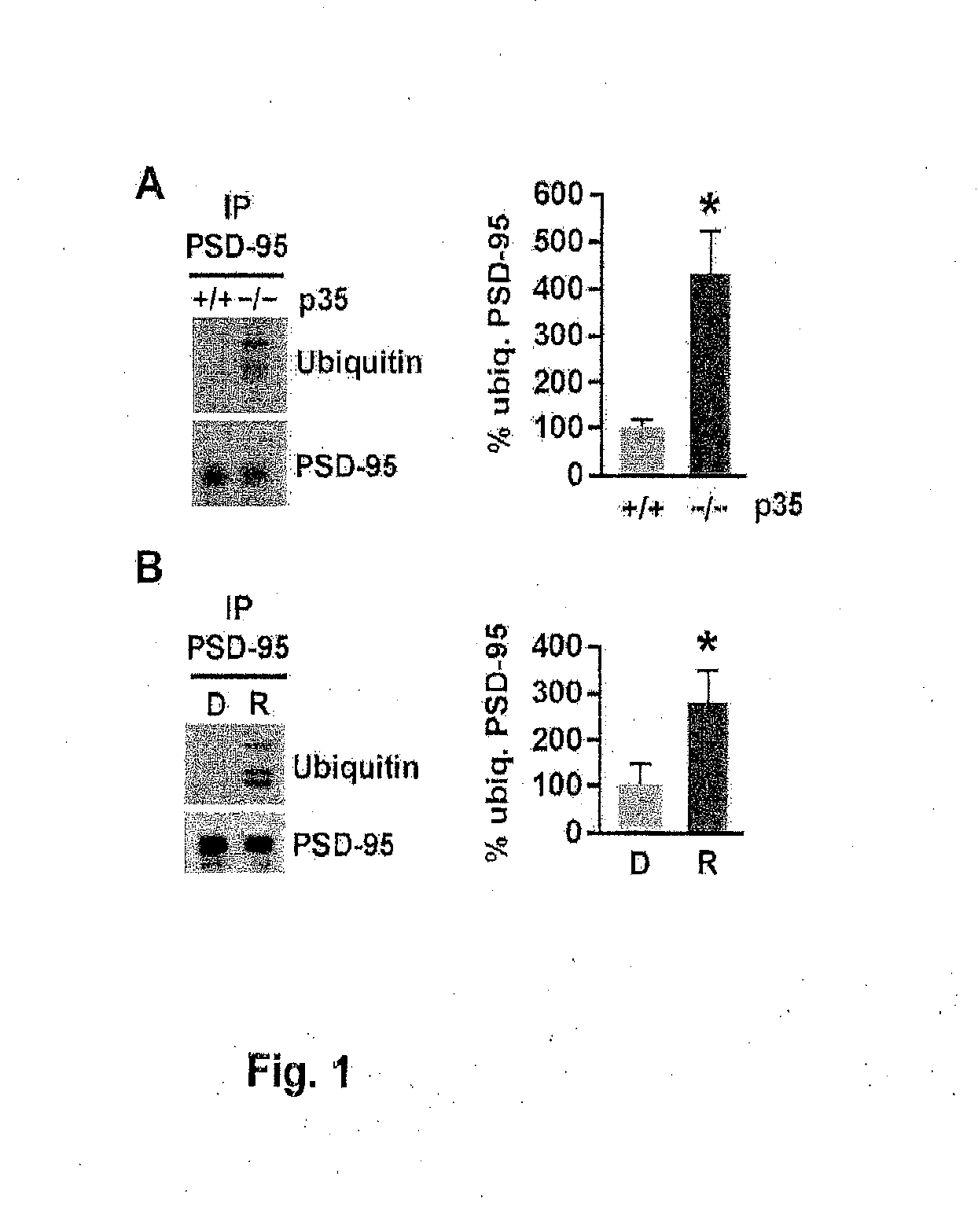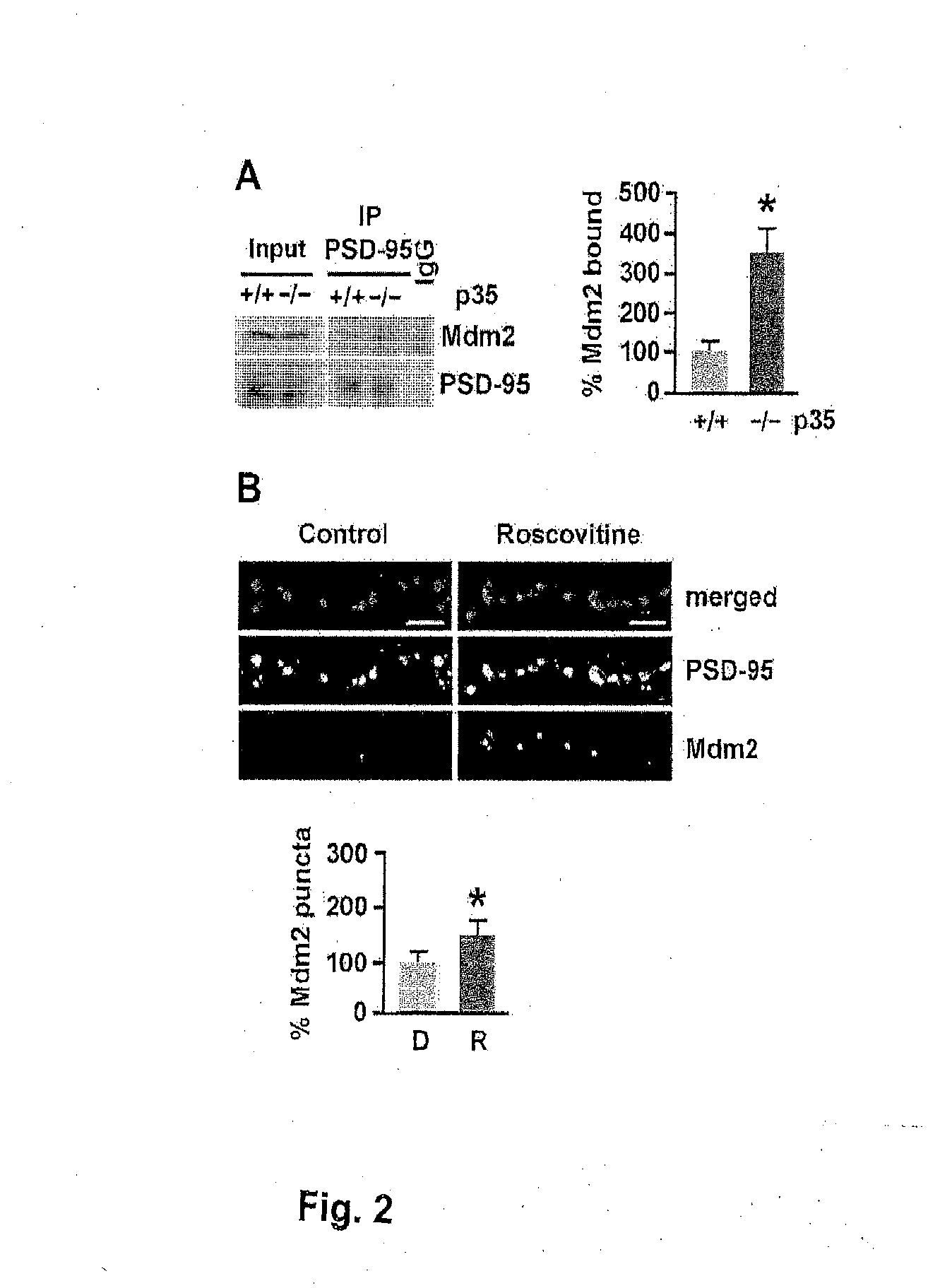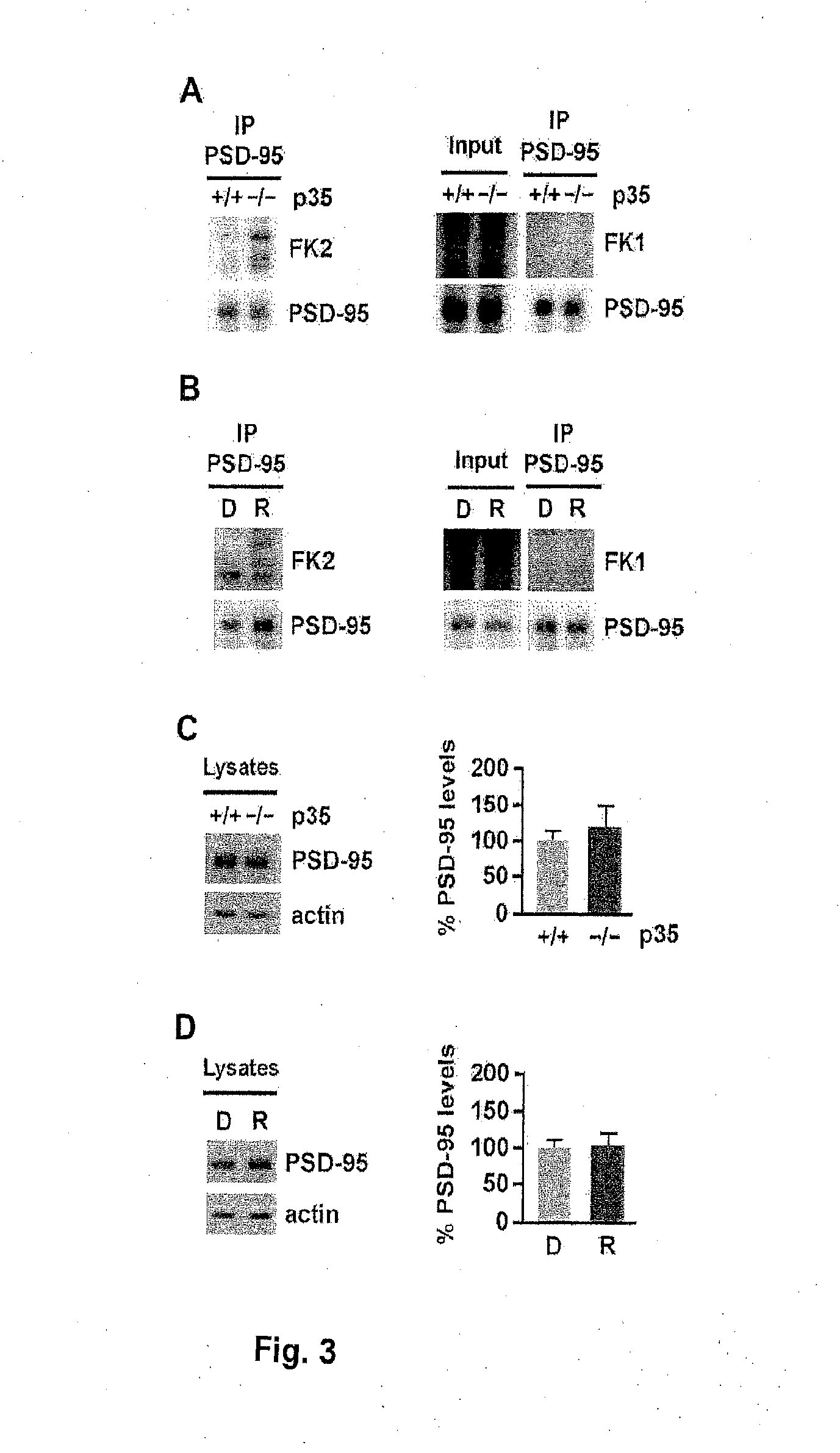Modulation of ubiquitination of synaptic proteins for the treatment of neurodegenerative and psychiatric disorders
a technology of ubiquitination and synaptic proteins, applied in the field of neurodegenerative and psychiatric disorders, can solve problems such as limited medical benefits, and achieve the effect of increasing the ubiquitination of psd-95
- Summary
- Abstract
- Description
- Claims
- Application Information
AI Technical Summary
Benefits of technology
Problems solved by technology
Method used
Image
Examples
example 1
Reduced Cdk5 Activity Increases the Interaction of PSD-95 with Mdm2 and PSD-95 Ubiquitination
[0255]To assess whether PSD-95 ubiquitination is regulated by Cdk5, the levels of PSD-95 ubiquitination were analyzed in p35 knockout mice, in which the activity of Cdk5 is reduced by 78% (Hallows et al., 2006). Immunoblotting of PSD-95 immunoprecipitated from brain using an ubiquitin antibody revealed discrete bands resembling the ubiquitinated species observed by Colledge et al. (2003) and a more than 4-fold increase in PSD-95 ubiquitination in p35 knockout mice compared to wild-type littermates (431.3%±84.4% versus wild-type 100%±18.5%, n=3, p<0.05; FIG. 1A). The levels of PSD-95 ubiquitination were also determined in acute mouse forebrain slices in which Cdk5 was inhibited pharmacologically by treatment with the Cdk5 inhibitor roscovitine (10 μM, 45 min) (FIG. 1B). Consistent with the increase in PSD-95 ubiquitination observed in p35 knockout, pharmacological inhibition of Cdk5 by roscov...
example 2
PSD-95 is Monoubiquitinated on Multiple Lysines without Affecting its Protein Levels
[0257]Ubiquitination may occur by the addition of a single ubiquitin moiety to one or multiple lysine residues (monoubiquitination and multiubiquitination, respectively) or by addition of polymeric ubiquitin chains formed through lysines within ubiquitin (polyubiquitination) (DiAntonio and Hicke, 2004; d'Azzo et al., 2005). While Mdm2 can catalyze both monoubiquitination as well as polyubiquitination (Li et al., 2003), the discrete ubiquitinated species observed by Bianchetta et al. (2011) and Colledge et al. (2003) suggest the addition of single ubiquitin moieties to PSD-95. To determine whether the ubiquitination of PSD-95 reflects multiubiquitination or polyubiquitination, the FK1 and FK2 antibodies were used, both of which recognize polyubiquitinated proteins, while only the FK2 antibody detects monoubiquitin conjugates (Fujimuro et al., 1994). Immunoblotting of PSD-95 immunoprecipitated from p35...
example 3
PSD-95 Monoubiquitination Promotes the Interaction of PSD-95 with β-Adaptin
[0260]Monoubiquitination and multiubiquitination have been implicated in a number of processes including endocytic adaptor function, trafficking, and sorting (Hicke and Dunn, 2003; Praefcke et al, 2004; Lefkowitz et al, 2006). PSD-95 ubiquitination has been implicated in NMDAR-induced AMPAR endocytosis (Colledge et al., 2003), which is mediated by the clathrin endocytic complex (Carroll et al., 1999; Man et al., 2000). The C-terminus of PSD-95 contains two copies of the tyrosine-based motif YXXΦ (Craven and Bredt, 2000), which mediates interaction with the plasma membrane adaptor complex AP-2, a complex involved in clathrin-mediated endocytosis (Ohno et al., 1995; Traub, 2009). Furthermore, there is evidence that PSD-95 interacts with AP-2 (Fernandez, et al., 2009) and that one YXXΦ motif of PSD-95 is sufficient to mediate clathrin-mediated endocytosis of a transmembrane receptor (Craven and Bredt, 2000). The...
PUM
| Property | Measurement | Unit |
|---|---|---|
| Plasticity | aaaaa | aaaaa |
Abstract
Description
Claims
Application Information
 Login to View More
Login to View More - R&D
- Intellectual Property
- Life Sciences
- Materials
- Tech Scout
- Unparalleled Data Quality
- Higher Quality Content
- 60% Fewer Hallucinations
Browse by: Latest US Patents, China's latest patents, Technical Efficacy Thesaurus, Application Domain, Technology Topic, Popular Technical Reports.
© 2025 PatSnap. All rights reserved.Legal|Privacy policy|Modern Slavery Act Transparency Statement|Sitemap|About US| Contact US: help@patsnap.com



